The Mercedes EQS is the electrical equivalent of the Mercedes S-class. And that creates sky-high expectations. Can the EQS deliver on that? Not quite. Even though it is without a doubt a fantastic electric car.
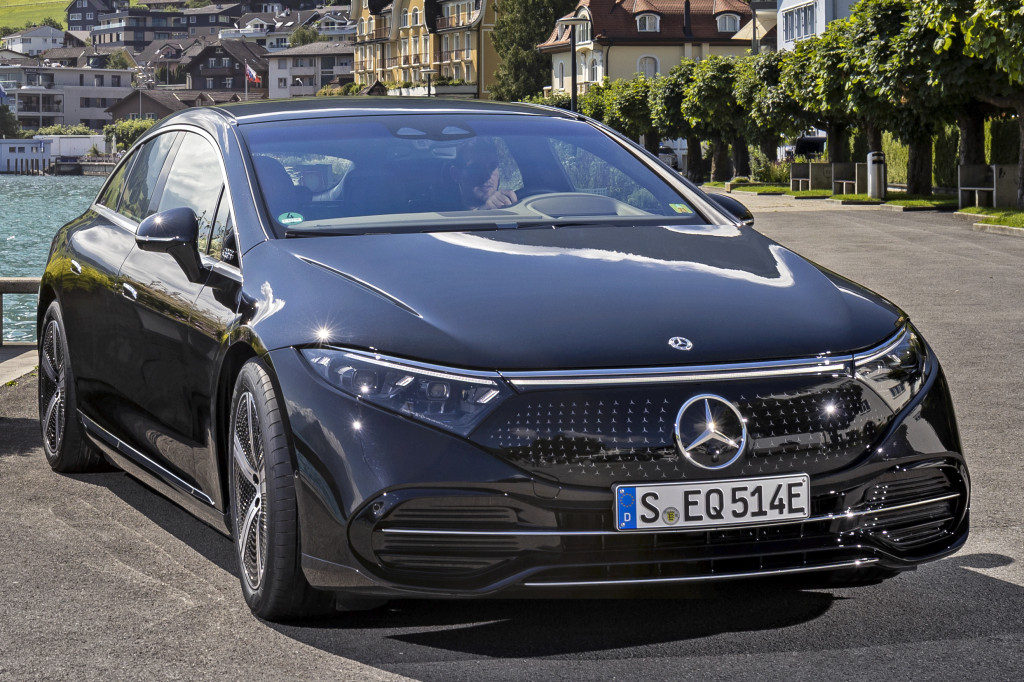
What is striking about the Mercedes EQS?
Put a compass on paper and turn it a quarter turn. Voila! You have the roofline of the Mercedes EQS. The electric top limousine took its shape in a wind tunnel, you can see that immediately. With a drag coefficient of only 0.20, it is as aerodynamic as an American football. However, the fact that the designers of the EQS have been so obsessive about air resistance also has a disadvantage.
The big Mercedes looks futuristic, but doesn’t have the visual impact of an S-class. Its design works best diagonally from the front, in our opinion. Seen from the back, the EQS is interchangeable, a bit bland. Is the car beautiful? We did not get a clear answer to that in our test week. Some people think it’s beautiful, others don’t get hot or cold. Nobody really thinks he’s ugly.

What’s good about the Mercedes EQS?
It is busy on the Dutch roads and it seems as if there is a more aggressive atmosphere than before. Maybe in corona times people have forgotten how to drive. Maybe the patience has run out and the fuses are shorter. Whatever it is, you hardly notice it in the new EQS. The interior of the fully electric luxury limo works like a cocoon. In the driver’s seat of the EQS, you are gently and silently rocked to your destination. What’s going on outside? You don’t get much from that.
An Audi E-Tron GT or Porsche Taycan will whip you up and cost you your driver’s license in no time. The Mercedes is different. He, too, is gone at the stoplight in an instant, but doesn’t encourage that kind of hooligan behavior. In an enthusiastically taken bend you feel its monstrous weight of more than 2500 kilos pushing through to the outside. Your own fault, you should send in less boldly. The EQS is there to give you peace of mind, not to boost your heart rate above 100 beats per minute.
Mercedes has given the EQS a dynamic driving mode, but we would just leave it in comfort mode. Then he calmly sways over speed bumps, transverse ledges and manhole covers. The steering offers little feeling. The EQS wants to keep you as far as possible from all outside sensations. The interior is unbelievably quiet. Actually you only hear some wind and tire noise in the distance. A necessary option is the rear axle steering. This gives the Mercedes the turning circle of a Fiat Panda.
The EQS 580 we drove was equipped with the optional Hyperscreen. This consists of digital instruments, a large infotainment screen and a display for the passenger seat, all under one glass plate. It looks beautiful and feels very concept car-like. If you do not order the Hyperscreen, you will get a digital cockpit and a vertical infotainment display, as in the S-class.
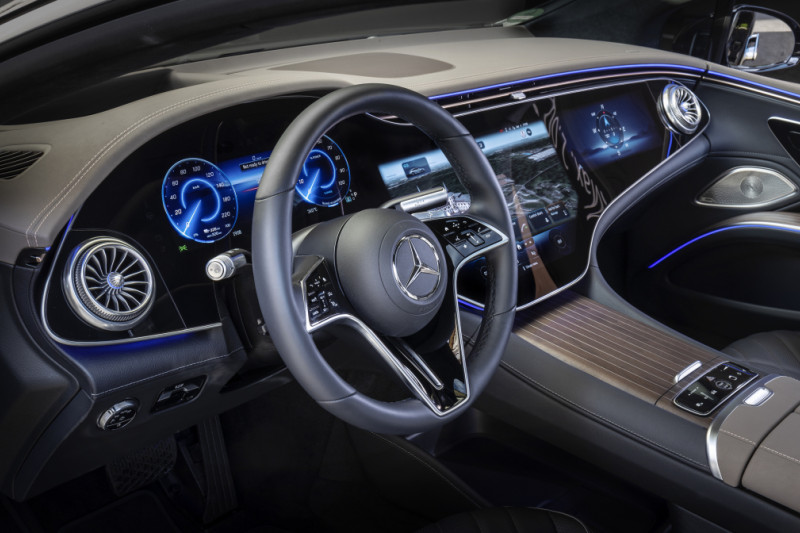
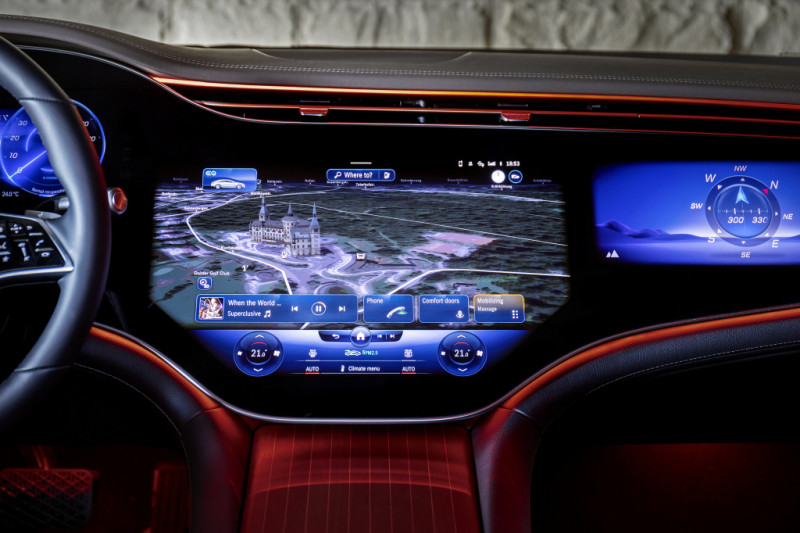
It would go too far to explain all the possibilities of the Hyperscreen in this review, because there are hundreds, if not thousands. It is important to know that the operation is generally quite user-friendly. Yes, there are few physical buttons anymore, so you have to take your attention off the road a little too long to be able to operate a function, but that is the case in almost all new cars.
The only ‘disadvantage’ of the Hyperscreen would be that it is so large that you sometimes have to get out of your chair to click on the right side of the screen. Or you have to have very long arms. We find the buttons on the steering wheel more problematic. These are not real buttons, but small touch areas that you have to swipe and click on. And actually they are too small for that and they are too close to each other.
Want to stay informed of our reviews and driving impressions?
Subscribe to the Auto Review Newsletter
Because the EQS is so long, it offers space for a large battery: 107.8 kWh net. You can read how efficiently it handles its power in our range test. It is striking, however, that at 100 km/h it is almost as economical as the manufacturer, but at 130 km/h it becomes extremely thirsty. A range of more than 650 kilometers, as Mercedes states, is not possible in practice. You always hand in more than 100 kilometers.
Fast charging makes the EQS work (200 kW), but not as fast as the Hyundai Ioniq 5 (220 kW), Kia EV6 (240 kW), Tesla Model 3 (250 kW) or Audi E-Tron GT / Porsche Taycan ( 270 kW). The old Mercedes slogan ‘Das Best or Nichts‘ is therefore not relevant here. At the right charging station, you can nevertheless recharge the battery of the Mercedes in just over 30 minutes to 80 percent.
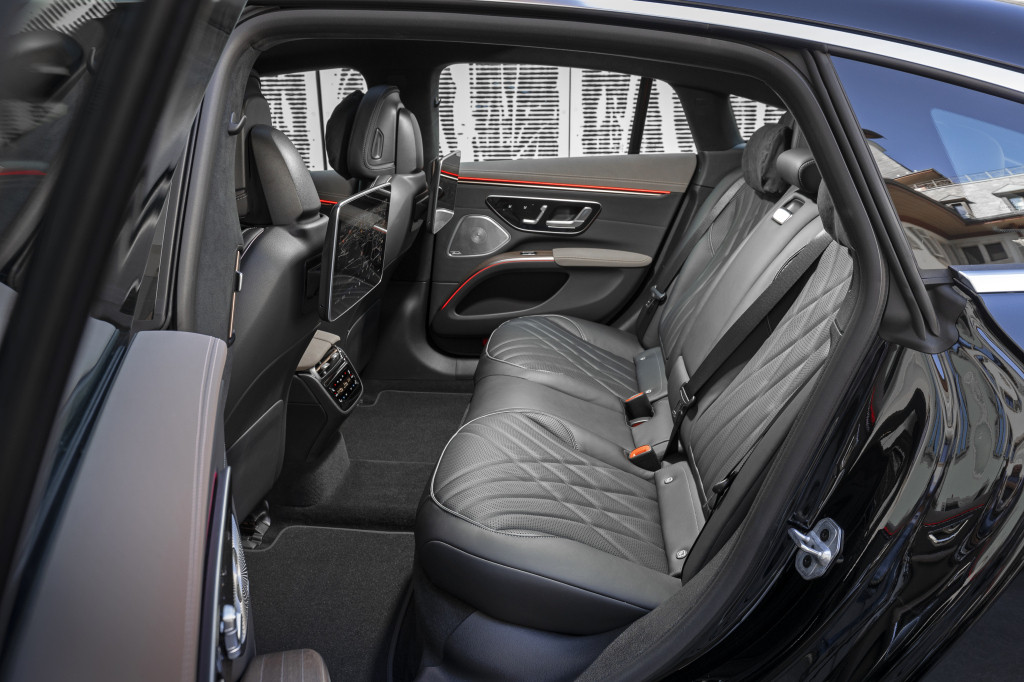
What could be done better with the Mercedes EQS?
Due to its pronounced banana shape, the EQS looks a lot more compact than it actually is (it will be difficult to distinguish it from the upcoming Mercedes EQE). Unfortunately, you notice the consequences of Mercedes’ design choices immediately when you take a seat in the back seat. There is plenty of legroom – that is also allowed in a 5.21 meter long car – but you look in vain for sufficient headroom. Especially if you are 1.85 meters or taller, you sit in the back with a painfully bent neck.
Our test car also suffered from some electronic idiosyncrasies. On a rainy autobahn, at a speed of 130 km/h, the active cruise control suddenly began to brake hard, without a fellow road user being seen in the farthest distance. A little later we received a message that the system was temporarily not usable. Furthermore, the navigation system was not very good at locating, because every time it was first a few hundred meters next to our actual location for 10 minutes.
Our last point of criticism is highly subjective. The EQS is the electric alternative to an S-class, but it doesn’t feel that way. A few months ago we had an S 500 4Matic Lang on the Car Revieweditors, who made much more of an impression than his electrical brother. Separately, three editors said about the EQS that they had the feeling of being in an E-class, not in an almost 175,000 euro top sedan from ‘Das Haus‘ from Stuttgart. Because that’s how expensive our test EQS was…
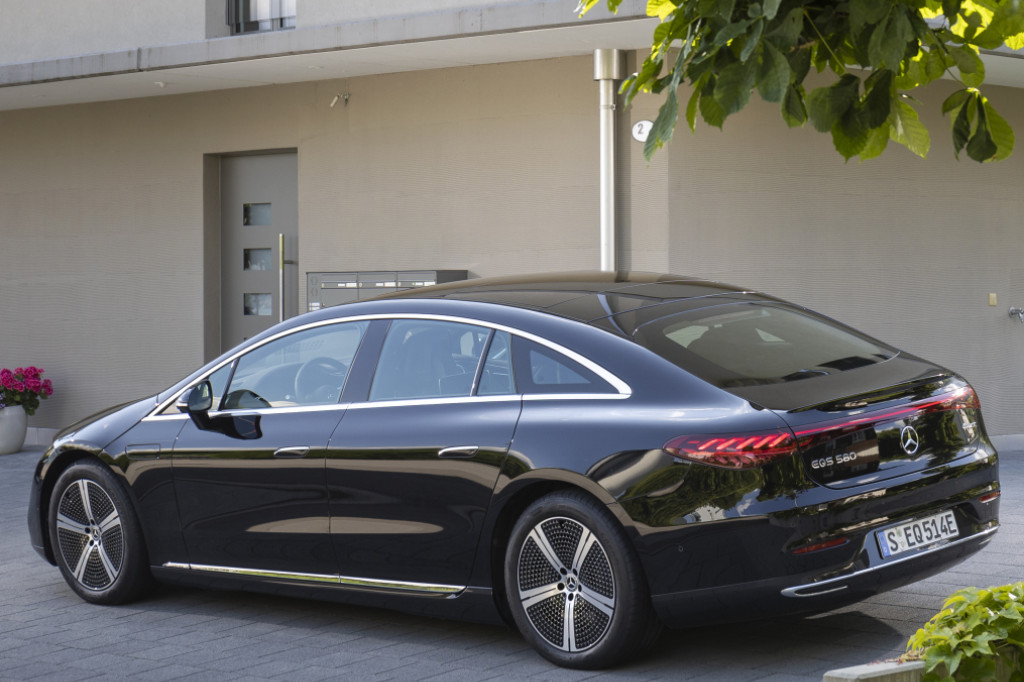
When will the Mercedes EQS come and what will it cost?
The price list of the EQS currently includes two versions: the EQS 450+ and the EQS 580 4Matic. The first is available from 121,432 euros and has a 333 hp and 568 Nm supplying electric motor on the rear axle. On a full 107.8 kWh battery, it theoretically covers more than 700 kilometers. The EQS 580 4Matic has four-wheel drive. With its 523 hp and 855 Nm, it sprints to 100 km/h in 4.3 seconds. The model has the same battery as the EQS 450+, but a WLTP range of up to 650 kilometers.
Above the EQS 580 4Matic, which costs EUR 157,490, an AMG version will soon be available: the Mercedes-AMG EQS 53. The 2655 kilo ‘sporty’ plug-in limousine blows to 100 km/h in just 3.4 seconds, propelled by two engines with maximum 761 hp and 1020 Nm. For a real ‘AMG experience’, the EQS 53 plays a kind of engine sound through the speakers. What if there’s no hellish V8 under the hood anymore…

What do I think of the Mercedes EQS?
The Mercedes EQS 580 4Matic is a great electric car: quiet, comfortable, equipped with every luxury, and with a more than usable range. But whether he is also a great S-class, I do not know. Like my colleagues, I sometimes had the feeling of being in an E-class. Yes, you are surrounded by fabulous technology – the Hyperscreen alone is astonishing – but something is still missing. Space in the back seat especially, but also the feeling of wealth that every S-class gives you. And you want that for more than one and a half tons …